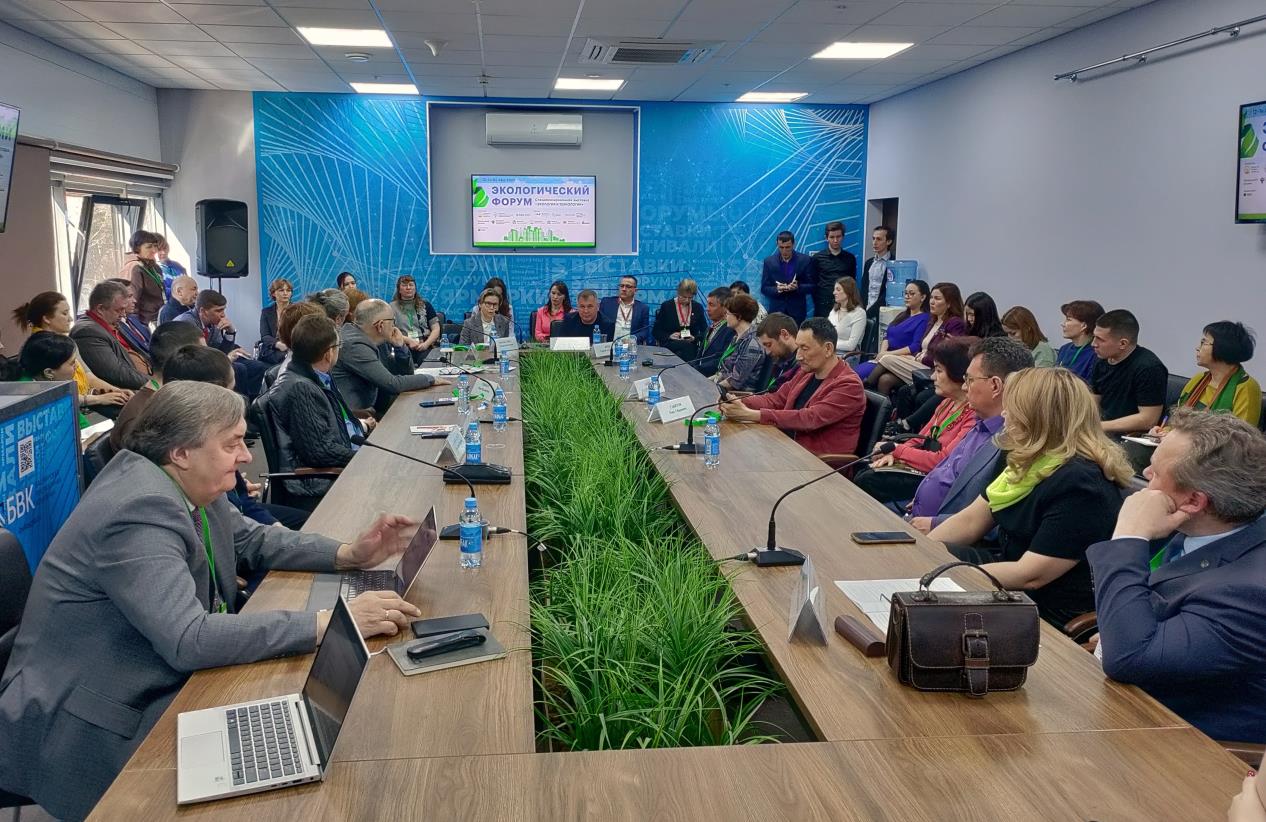FAO at the Ecoforum in Bashkortostan: agricultural heritage, agritourism, and rural development

Photo: ©FAO/Vladimir Mikheev
“For FAO, issues concerning agriculture heritage, agrotourism, and biodiversity play a crucial role. Our core mandate is food production and agriculture. At the same time, growing population and demand for food products compels the agricultural sector and its infrastructure to “bite off” more and more territories from the environment, including parts of natural reserves. As a result, competition for natural resources, against the background of climate change, is becoming tougher and tougher.”
This is how Oleg Kobiakov, Director of the FAO Liaison Office with the Russian Federation, outlined one of the most acute, urgent, and global development issues in his report on 13 April at the session “Modern approaches to the development of ecotourism in specifically protected areas. Territorial sustainable development programmes”, which took place in Ufa, capital of the Republic of Bashkortostan, within the framework of the Ecological Forum.
“We must ensure that nature remains in its habitat, protect biodiversity, the unique character of interaction between ecosystems, produce goods and services in a way that harms nature least of all,” the Head of the FAO Moscow Office continued. “For this reason, FAO also deals with conservation of wildlife species and habitats. For example, FAO facilitates the conservation of the Amur Tiger and the Amur Leopard.”
“FAO, like UNESCO, has a world heritage flagship programme. This is the Globally Important Agricultural Heritage Systems (GIAHS).
A number of criteria determines the objects: combination of biodiversity and ecosystems, traditional agricultural methods, and cultural identity. Agricultural methods and Indigenous Peoples’ food systems specificity play a crucial role. FAO is convinced that both the Bashkirs, as the autochthonous population of this part of the Volga region, and other peoples living in Bashkortostan can contribute to this world agricultural treasury.”
“There are certain differences between the UNESCO and the FAO World Heritage programmes. Our objects are production systems related to traditionally stable population groups that are interconnected with ecosystems and the production of one or another type of demanded product, and not necessarily food. Our mandate area also includes forestry, which provides a lot of tasty, healthy, irreplaceable food products, like honey, as well as serves as a source of wood, from which houses are built, furniture is produced, and therefore is a source of livelihoods for tens of millions of people around the world.”
“The Bashkir wild-honey farming is one of the goals of our trip to Ufa,” Oleg Kobiakov explained. “We have prepared the documentation to nominate this ancient craft and its final product for the status of GIAHS object. Obtaining such a status will allow the Republic to benefit from broad awareness and recognition, which in turn will feed the popularity of brands and stimulate agritourism and ecotourism.”
Vasily Martynenko, PhD in Biology, Professor at the Academy of Sciences of the Republic of Bashkortostan and Director of the Ufa Institute of Biology UFRC RAS, touched upon the acute problem of the Bashkir bee (Apismelifera) degeneration due to its mixing with imported subspecies. Many bee families imported from southern regions have inhabited the steppe areas of the Burzyan District. The crossbreeding with the Burzyan (Bashkir) wild hive bee forms a mixed bred hybrid that lacks the viability of its parents. Consequently, the population is being degenerated.
Professor Martynenko suggested adopting a package of emergency measures to preserve the population nucleus: expanding the area of the Shulgan-Tash Nature Reserve; introducing “zootechnical methods for valuation, analytical selection and reproduction of laying queens of “the Burzyan bee” and their spreading to neighbouring apiaries”; introducing “legislative measures to ban the import of other bee species into the area of the Bashkir Ural Biosphere Reserve.”
Vadim Kalinichev, Executive Director of the National Association of Rural and Ecotourism, reminded the seminar participants that rural tourism is clearly defined in the federal legislation. It is “tourism that includes visiting rural areas and small towns with population below 30 000 people for the purposes of recreation, familiarization with traditional ways of life and agricultural producers’ activities and (or) participation in agricultural work without any material gain and with a possibility to provide temporary accommodation, organization of leisure, excursions and other services.”
Rais Gabitov, Director of the Digital Kurultai Agency, Founder of the Great South Ural Trail, emphasized the importance of a well-chosen route for Bashkir nature hikers. In his presentation “Tourist Trails as a Linking Point between Specially Protected Natural Areas in the Region”, this devotee and enthusiast pointed out the rational need to “thread routes through villages”, and thereby involve the local economy in the system of agrotourism, which can be a significant source of additional income.
The seminar was also addressed by Evgeny Syrkin, Head of the “Protected Belt” project and Editor-in-chief of the “Through the Eyes of a Tourist” channel; Rinara Mutygulina (the “Biodiversity Conservation and Ecotourism Development” project of the “Ecology” national project); Salavat Nafikov, Head of the Bashkir Natural Parks Directorate; Anastasia Skrebtsova, Deputy Director of the Curonian Spit Reserve; and by community activists representing local environmental organizations and initiatives.
At the conclusion of the section, the Head of the FAO Moscow Office discussed with the participants further steps within the joint work of FAO and representatives of the Republic in preparing the nomination of the Bashkir wild-honey farming for the status of globally important agricultural heritage systems.
Familiarize yourselves with our other materials following the working visit to Ufa:
• FAO in Ufa: vertical and horizontal partnerships
